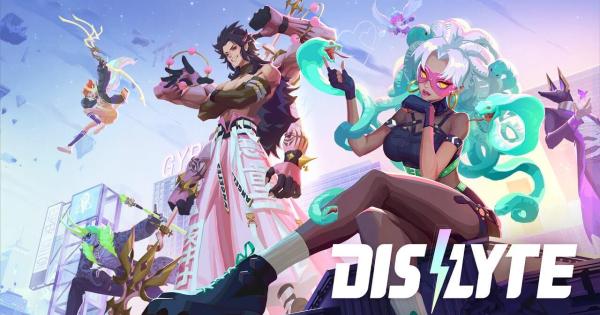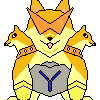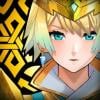Dislyte Review: The Esper Grindset Game

Lilith Games
Lilith Games is a Shanghai-based developer that publishes various games, well known for AFK Arena, Rise of Kingdoms, and more. Recently they established Farlight Games, their global publishing brand based in Singapore.
Dislyte is their launch titles, which I've had the pleasure of reviewing.
*Note: I was granted a boosted reviewer account with free currency.
First Impressions
Dislyte’s advertising had me piqued in its potential: Characters based on historical figures and an EDM focus sounds like a banger! And so I installed the game.
My first thought was that the 3D Models and flashy UI runs smooth and looks good on my OnePlus 7. While the artstyle is decidedly Western, there’s definitely attractive characters for the anime-inclined people. The animations in combat and in-menus are pretty slick and characteristic. As far as performance, the game runs fine. Then came the disappointments.
My biggest initial disappointment was the advertised EDM focus. The OST didn’t really live up to my expectations given the hype, instead offering EDM as a visual theme. To double down on my disappointments, I thought Dislyte was going to be a rhythm-based mobile RPG, but the rhythm game portion is a minigame. That’s on me for not reading the press release properly, though.
Next, the story is thin and the characters really don’t do much to reference their historical base except vague cosplays. Most of all, the lack of early strategy made me reach for the autobattle as soon as I unlocked it.
All in all, I’m burned out from turn-based RPG’s and almost wrote off Dislyte in the first hour of review time as a run-of-the-mill autobattle RPG.
Second Chance
In defense of Dislyte, once you stop to read character skills and start thinking, the game becomes a lot more playable. While I did get a review boost of 20,000 gems, 100 Gold Records, and 100,000 coins, these are mostly relevant towards the gacha and would not have solved any of the systematic problems.
Once I hit a wall at 4-8 and needed to start strategizing, I naturally started exploring all the other systems and figuring things out. The progression rewards are actually very well done and provide a great scaffolding for getting into the game. While I was disappointed on the general thematics, the actual strategy involved became decently satisfying, with a variety of in-battle effects and options to consider when teambuilding. The keyworded effects are explained on the character pages, and each character even has their own writeup in-game.
What really got my heart pounding was the Ripple Waves. In these events, you need to camp in a channel for a notification and fight other people for limited space in obtaining these Ripple exclusive characters. Don’t check out Channel 8, though.
My favorite mode was Cube, the roguelike. It’s definitely more restricted in terms of roguelike possibilities, and I can see it getting annoying with more runs, but as far as it goes, I enjoyed choosing the runes and making my team broken.
In hindsight, maybe EXP/enhancement materials/ intermediate relic sets would have been a better reviewer boost to really get into the core gameplay. Also maybe a copy of Lin Xiao…
Core Gameplay
The core gameplay loop boils down to strengthening your characters by farming. There are three things to farm: Relics (Equipment), EXP, and Waves (Ascension Materials). For gacha game veterans, this is standard fare, if not straightforward.
Not strong enough to pass a stage? Do some grinding.
There’s other strengthening items for characters (i.e. starimons and abilimons which upgrade the rarity and abilities of characters, respectively), but these are gated behind un-grindable currencies for the most part. These currencies are obtained from the other game modes like PvP and Cube (roguelike).
Fortunately, not only is autobattle available, but multi-battle as well, which allows players to repeat stages automatically while challenging a different stage. As expected of the AFK Arena developers, the game becomes an autobattle fest where the strategy is saved for PvP, challenge stages, and how best to allocate stamina. In short, they’ve done well at providing the dopamine hits of seeing your characters’ numbers go up.
Criticisms
Relics
Half of the battle actually comes down to Relics (Equipment), which can more than double a character’s stats. Epic 7 veterans know the struggle of substat hell, but while Relics are simpler in effect, optimizing them involves at least 4+ layers of RNG.
There are four specific slots for primary Relics (Triangle, Diamond, Circle, Square), and two for secondary relics (Hexagon, Spade), each vaguely correlating to a core stat. Relics come in these four and two different shapes. On the plus side, Relics come in sets, and equipping all of the same relics in a set regardless of rarity provides a buff like +25% speed. And that’s where the easy part ends.
Farming Ritual Miracle stages drops a pool of 3 primary and 3 secondary relics, for a total of 18 different types of relic drops.
On top of the RNG from obtaining specific relic sets/shapes, they also come in four grades from from “Good” to “Flawless”, which affect the stat and substat caps. Circle and Square Relics can have any stat except for speed, and core stat bonuses can be either percentage or flat. The substats a relic comes with are random (including flat speed bonuses), and are only revealed/assigned once a relic is enhanced. Outside of certain events, relic substats cannot be rerolled.
Lastly, relics gain stats through being enhanced, which costs in-game farmable gold. But at higher levels relic enhancements both cost more gold and also have a lower chance at success. This turns out to be quite a gold sink for high rarity relics, especially given the quantity to be enhanced on a team.
TLDR: Relics have up to 6 layers of RNG: Relic set, relic shape, relic stat, relic substats, relic grade, and enhancement success.
From an effect perspective relics are straightforward, but the focus on stats puts more importance on speed. Since characters don’t gain speed per level, additional speed is only available through relics. Full speed substat relics can make characters as fast as Wind Walker (+25% speed) equipped characters without speed substats.
Relics can be bought in many of the other shops, but the available stats are still random. In short, relics are the grind and will be the greatest time sink.
Gacha
There is a guaranteed Legendary Esper every 120 rolls, and rateup guaranteed at 450 rolls. The pity system is often complained about, especially since there isn’t an increasing rate/no rateup guarantee until 450 rolls. I think the bigger problem is the rateup - the rateup is advertised as a 10% chance upon getting a SSR, which itself is a 1% chance. That means there is a .1% chance of getting the rateup, compared to FGO’s infamous .8% rateup, or even Genshin’s infamous-er .6% SSR rate with 50/50 pity and guarantee on the second pity.
Do expect whaling for characters to be expensive due to these low expected values. On the plus side, duplicate characters just provide stat boosts to either attack, defense, or hp. So you only really need one copy.
Shimmer Rarity Inflation
Dislyte follows a traditional Rock-Paper-Scissors element system, with “Shimmer” being the universal neutral element. However, Shimmer characters will only appear 7% of the time a character is rolled. This makes Shimmer character’s rarity compound with increasing rarity given the 9% SR and 1% SSR rate. This is also divided amongst multiple Shimmer characters for each rarity, meaning a 4* Shimmer character like Li Xiao the White Tiger has only a fraction of .63% chance of appearing since there are currently seven 4* Shimmer Characters as of writing. The kicker is that the element system isn’t especially relevant, and so Shimmer characters’ elemental advantage doesn’t justify their rarity.
Unfortunately, the boosted account from the devs didn’t provide me with a copy of Lin Xiao.
PvP
I’m required to write about PvP, the boogeyman-elephant of gacha game players. Yes, getting higher rankings will get you more rewards. Yes, whales will dominate PvP due to simply having more stamina for better relics. Yes, you will die to cheese tactics.
But on the whole, while PvP is arguably the endgame, I personally didn’t place too much emphasis on it, and it is not required to finish the story. Players can completely take a casual approach to it if they’re satisfied with a slightly slower progression, since the rewards are more or less currency for strengthening materials. Compared to games like FEH, I didn’t feel as compelled to play PvP given the amount of other content available in the meantime. Your mileage may vary.
Events
The first event featuring Ollie had some backlash associated with it, especially forcing players to use Ollie, as well as patching in event stages giving EXP and Gold after people used stamina refreshes.
That being said, the devs appeared to have learned from the previous issues and the current Ahmed side-story event is pretty simple and I can’t really complain with the free rewards. Not only is Ahmed helpful during trial stages, but the event also doesn’t use stamina directly and there isn’t farming. This makes it a great event to go through while multi-battling something else.
Last Thoughts
Once you get past the early hump, Dislyte is a game that will really scratch the min-max grinding itch. The farming systems are very well streamlined, allowing players to focus on challenging stages and how to best build their team.
All in all, I enjoyed playing Dislyte on its second chance, especially after taking a casual approach to it.





